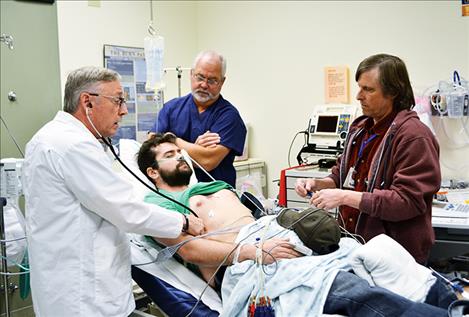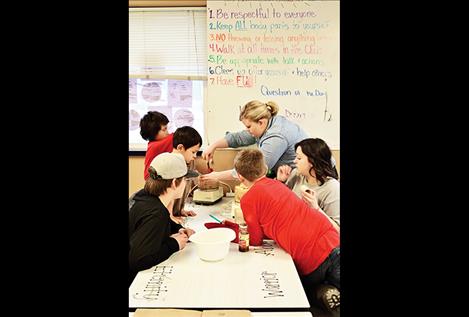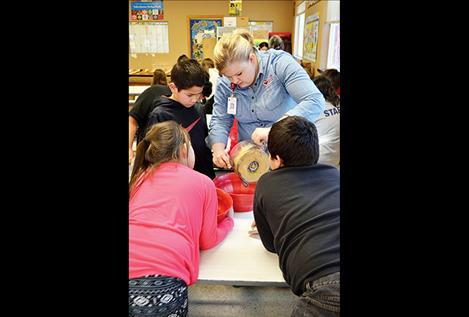St. Luke participates in heart attack response scenario
Hey savvy news reader! Thanks for choosing local.
You are now reading
1 of 3 free articles.
News from St. Luke Community Healthcare
RONAN - Not all heart attacks are created equal. The big one, the one you especially want to avoid, is called a STEMI.
STEMI stands for “ST segment Elevation Myocardial Infarction.” The “ST segment” isn’t a part of the human body. It’s a section of an electrocardiogram readout representing a phase of your heartbeat.
Though the medical jargon sounds complicated, a STEMI is a simple concept when you’re having one: It’s extremely painful, and it can kill you.
A STEMI is caused by a prolonged period of blocked blood supply to the heart muscle. When it strikes, speed is the key to survival. By performing advanced cardiac intervention within 90 minutes of a cardiac event, doctors can limit the heart muscle damage. That means a better chance of surviving, and a much healthier heart in the long term.
In rural states such as Montana many patients do not reside in close proximity to a cardiac center that provides this service on a 24/7 basis. That is why cooperation and communication between emergency response, hospital staff and the cardiac center is so crucial.
On Friday, Feb. 2, St. Luke Community Hospital, Montana Mission: Lifeline, Ronan EMS and Community Medical Center participated in a practice scenario to test the response of involved agencies. According to the Journal of American Heart Association, timely diagnosis of ST‐segment elevation myocardial infarction (STEMI) in the emergency department (ED) is made solely by ECG. Obtaining this test within 10 minutes of ED arrival is critical to achieving the best outcomes. St. Luke’s average time is five minutes.
Dr. Douglas Waldo from Community Medical Center led the drill with the help of Kris Latten-Jackson, Educator from the Montana Mission: Lifeline that involved emergency room providers, cardiopulmonary staff, surgery, acute care and emergency room nurses. “Every minute and every patient counts so working closely with St. Luke to educate the staff and improve processes are essential” said Dr. Waldo.
“We are a small, rural Emergency Department. We have 10 beds and see a yearly population of about 13,000. Despite limited resources and nearly 50 miles, by ground, to larger facilities in Missoula, we can save lives by being prepared for these critical patients and working with EMS to stabilize and transport them to the appropriate facility for further treatment” said Amy Lewis, St. Luke Emergency Department Manager.



















